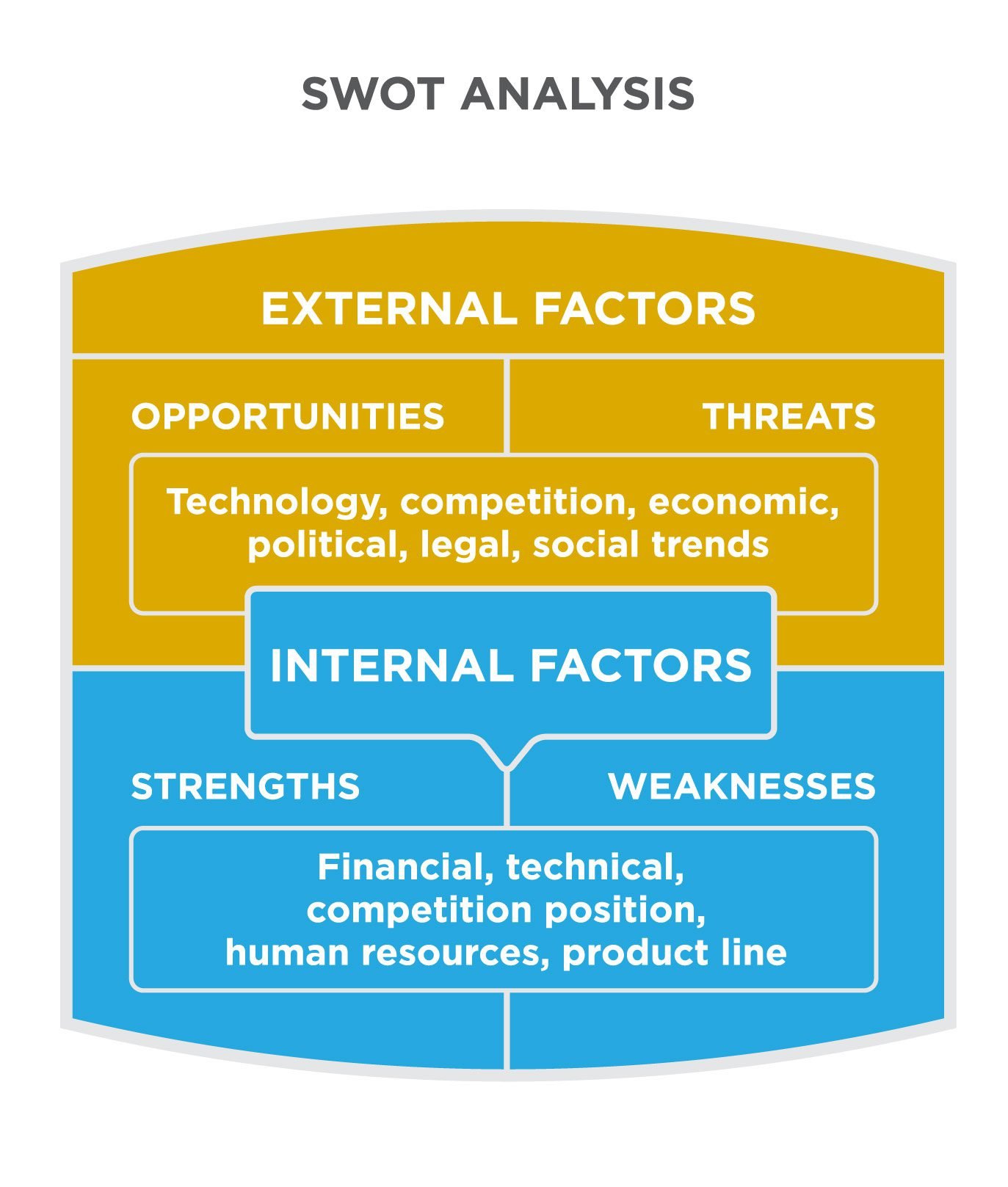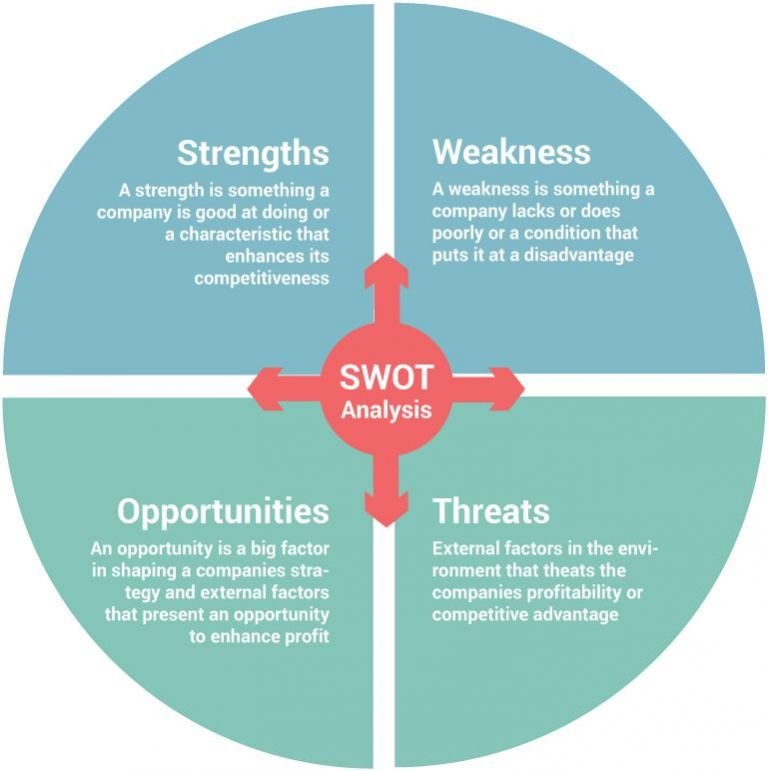Introduction:
In the realm of business strategy, a comprehensive grasp of internal factors is pivotal for enduring success. SWOT analysis, a widely adopted strategic planning tool, explores both internal and external elements shaping an organization’s trajectory. This blog post zeroes in on the two internal components of SWOT analysis, shedding light on the critical aspects that influence an organization from within.

1. Strengths: The Pillars of Organizational Excellence
The initial internal element of SWOT analysis is strengths, embodying core competencies and advantages that distinguish an organization within its industry. These strengths may encompass tangible assets like cutting-edge technology, a robust brand image, a skilled workforce, or intangible elements such as a distinctive organizational culture and innovation prowess.
Identifying strengths is pivotal in strategic planning, offering a roadmap for leveraging existing capabilities. Organizations that recognize and harness their strengths can strategically position themselves, outperform competitors, and navigate industry challenges more effectively. A thorough internal analysis often unveils hidden strengths, empowering companies to capitalize on their unique attributes for sustainable growth.
Take a look at the below blog the Elements of strategy
https://ediify.com/elements-of-strategy-a-comprehensive-overview/
2. Weaknesses: The Crucible of Improvement
On the other side of the spectrum, weaknesses represent internal vulnerabilities hindering optimal organizational performance. These weaknesses may span from outdated technology and insufficient resources to poor management practices and internal conflicts. Acknowledging weaknesses isn’t a signal of failure but an opportunity for improvement.
By identifying and addressing weaknesses, organizations can launch targeted initiatives to enhance internal processes, streamline operations, and fortify neglected areas. A proactive stance towards weaknesses is essential for resilience and adaptability, enabling organizations to evolve in response to changing market dynamics and emerging challenges.
Take a view on the below blog the challenges of strategy implementation
https://ediify.com/challenges-of-strategy-implementation-a-comprehensive-guide/
Conclusion:
In the intricate tapestry of strategic planning, a meticulous examination of internal elements through SWOT analysis provides a roadmap for organizational success. Strengths form the bedrock of excellence, empowering organizations to capitalize on unique advantages. Simultaneously, weaknesses, when acknowledged and addressed, become catalysts for improvement, fostering adaptability and resilience.
As businesses navigate the complexities of an ever-evolving marketplace, the synergy between strengths and weaknesses becomes the linchpin of strategic prowess. Understanding and optimizing these internal facets enables businesses to carve a path toward sustained growth and competitiveness.
In conclusion, the internal elements of SWOT analysis, strengths, and weaknesses, aren’t static entities but dynamic forces shaping the destiny of organizations. Embracing this dynamic interplay empowers businesses to navigate the currents of change, fostering innovation, and fortifying their position in the global marketplace.

For more information visit the mentioned website
https://corporatefinanceinstitute.com/resources/management/swot-analysis/


